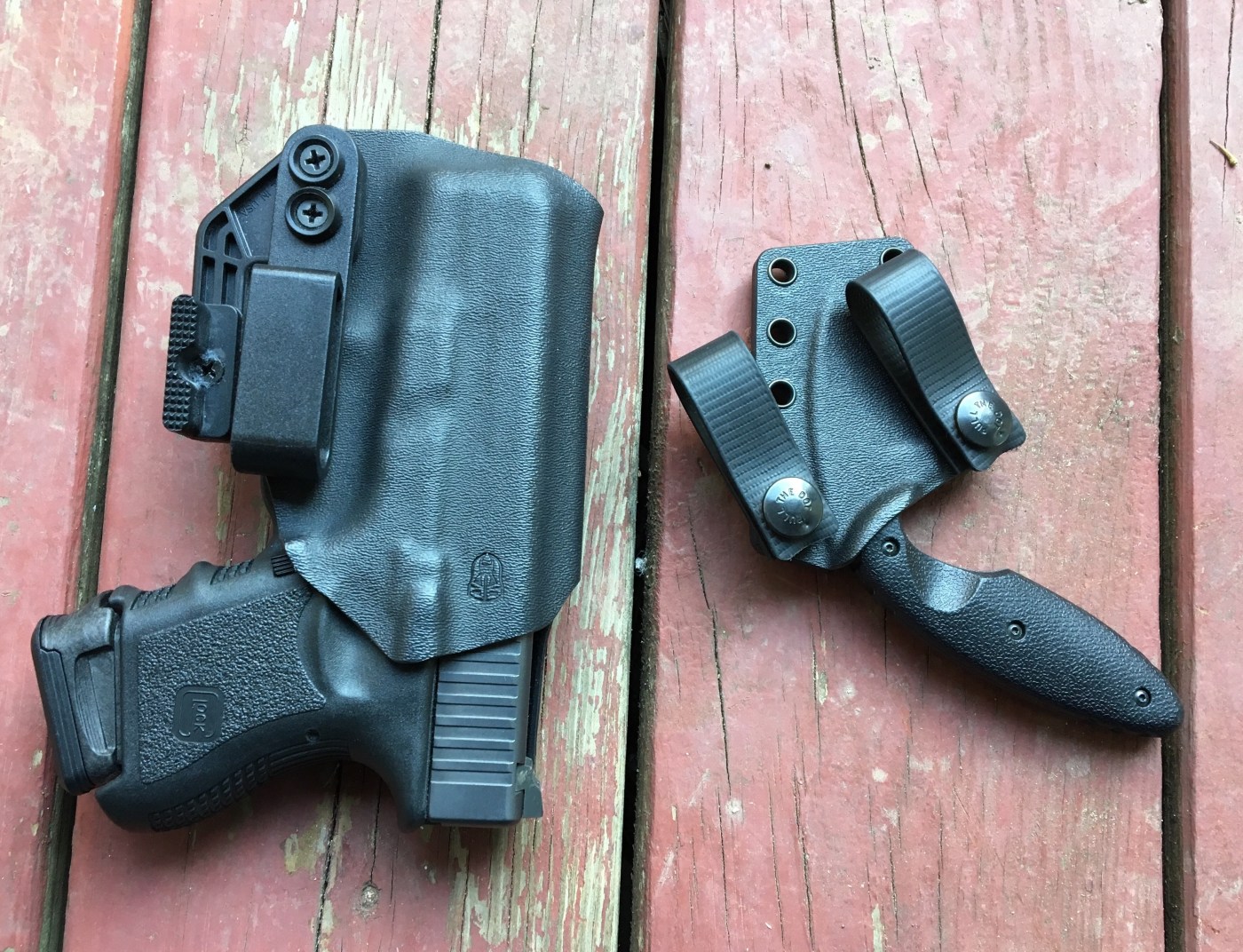The Ka Bar TDI is probably the most widely utilized blade of this design. Other makers, like Colonel Blades and Tops also produce knives that leverage the curved design of the TDI. This configuration looks odd at first glance, but upon training with it you can quickly realize the advantages in terms of pressing a blade into a self-defense role.
In the wake of different force-on-force training for contact distance fights I have found the role of a small fixed blade, carried forward of the hips, to be an integral component for dealing with such problems. If you train in handgun retention you will find that, no matter how good you are at the skill, a powerful and determined adversary may be able to take the gun away from you. A small blade is extremely difficult to disarm and may prove the better weapon to be deployed if locked up with a strong opponent in a lethal encounter. While such scenarios are not terribly common in civilian self-defense, a knife is a must-carry tool anyway, so if you have the option, why not carry one that is better suited for this worst-case scenario?
I have not trained extensively in self-defense skills with a knife, only some rudimentary training. Honestly, I am not an enthusiast for any sort of “knife fighting.” I consider the knife an essential rescue tool that must be carried daily, but pressing it into a self-defense role would be a last resort. The TDI design, and other blades of the same configuration, offer several advantages to those who are not extensively trained in fighting with a traditional blade. These advantages include:
1 – The angle of the knife makes grasping it from the waistband intuitive, it is a similar grip angle as a handgun. This is more familiar and natural to a gun guy than is drawing a traditional blade in either a saber or ice pick grip.
2 – I find that this angle also makes wearing the knife more comfortable as it bends to the side rather than sitting straight up, pressing further into your abdomen.
3 – Drawing the knife and punching directly out is a natural movement compared to drawing a traditional blade in a forward or ice pick grip and utilizing it in such a way. While such knife work is familiar to dedicated knife guys, these are actually less natural body movements for others, and the TDI and similar blades literally facilitate punching directly into a target.
4 – The design makes it unlikely that you will ride up onto the blade when striking something hard with it. This is a hazard with a traditional knife that many fail to recognize.
5 – The curved design also makes for a more natural and powerful slashing cut to come across the limbs of an attacker who might be trying to disarm you of your pistol.
These are the five advantages that seem apparent to me in the TDI design and this is why I use it as my fixed blade option. I think it is a great tool for those who wish to work a blade into their routine that can be used in a more intuitive way than a traditional knife.



